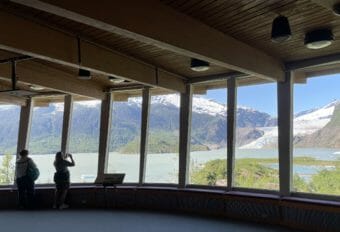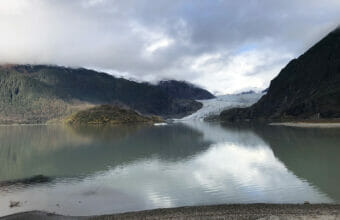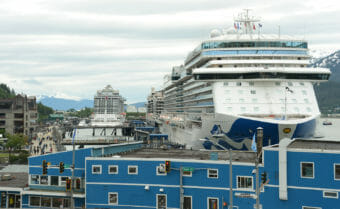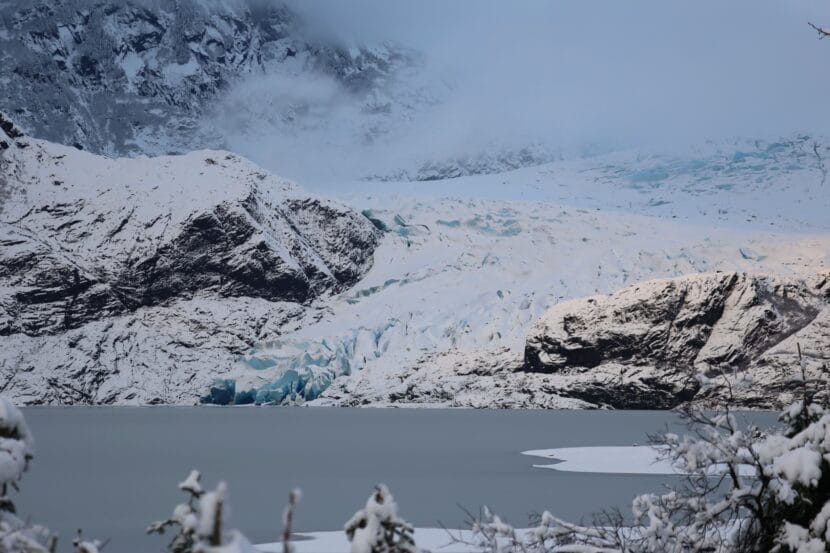
After nearly a decade, the U.S. Forest Service has finalized its plan to overhaul Juneau’s Mendenhall Glacier Recreation Area.
The project has provoked hundreds — if not thousands — of public comments from the Juneau community over the years.
“I like to see a plan that’s well managed and that listens to residents’ concerns,” said Alexandra Pierce, the city’s tourism manager. “People didn’t want to see motorized boats on the lake and additional visitor center facilities and the Forest Service listens to the public on that, which is a positive thing.”
The finalized plan includes a new welcome center and improvements to the old one. The plan also increases parking, expands trail systems, and adds an amphitheater and new public-use cabins.
The glacier is one of Alaska’s most-visited tourist attractions. Forest Service officials say the improvements will help manage the pressure from Juneau’s rapid growth in cruise ship tourism in recent years.
When the visitor center was built in the 1960s, the area saw about 23,000 visitors annually. Today, about 700,000 come to the glacier each year. The Forest Service estimates that by 2050, that number could grow to nearly a million.
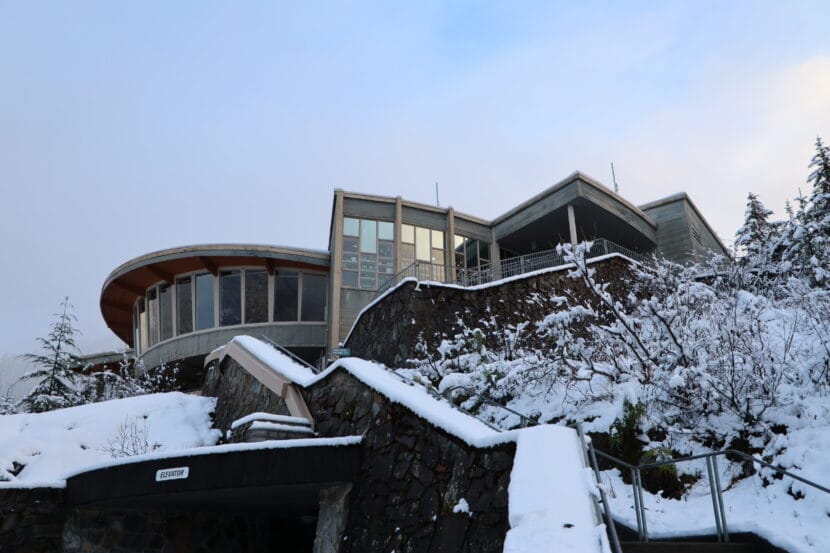
But as more and more visitors have been coming to the glacier, the glacier has been moving farther away — a process that’s accelerating due to climate change. Researchers from the University of Alaska Southeast estimate that between 2007 and 2021, the glacier has receded the equivalent of eight football fields.
In a few decades, it likely won’t be visible from the current visitor center at all. As the Forest Service plan took shape, suggestions for dealing with that included building the new center closer to the glacier’s face or allowing motorized boats on Mendenhall Lake to get people closer. Neither made it into the final plan.
Pierce said that listening to residents’ concerns about overcrowding while knowing that tourism will keep growing makes managing the area a constant balancing act.
“I do think that’s a difficult puzzle for the Forest Service to try to solve,” she said. “I think we’re all concerned about the receding glacier and what that means for the visitor experience in our community.”
According to Tongass National Forest Supervisor Frank Sherman, rather than make drastic changes to get people closer to the glacier, the USFS opted to address more pressing needs like overcrowding, restrooms and the aging visitor center.

